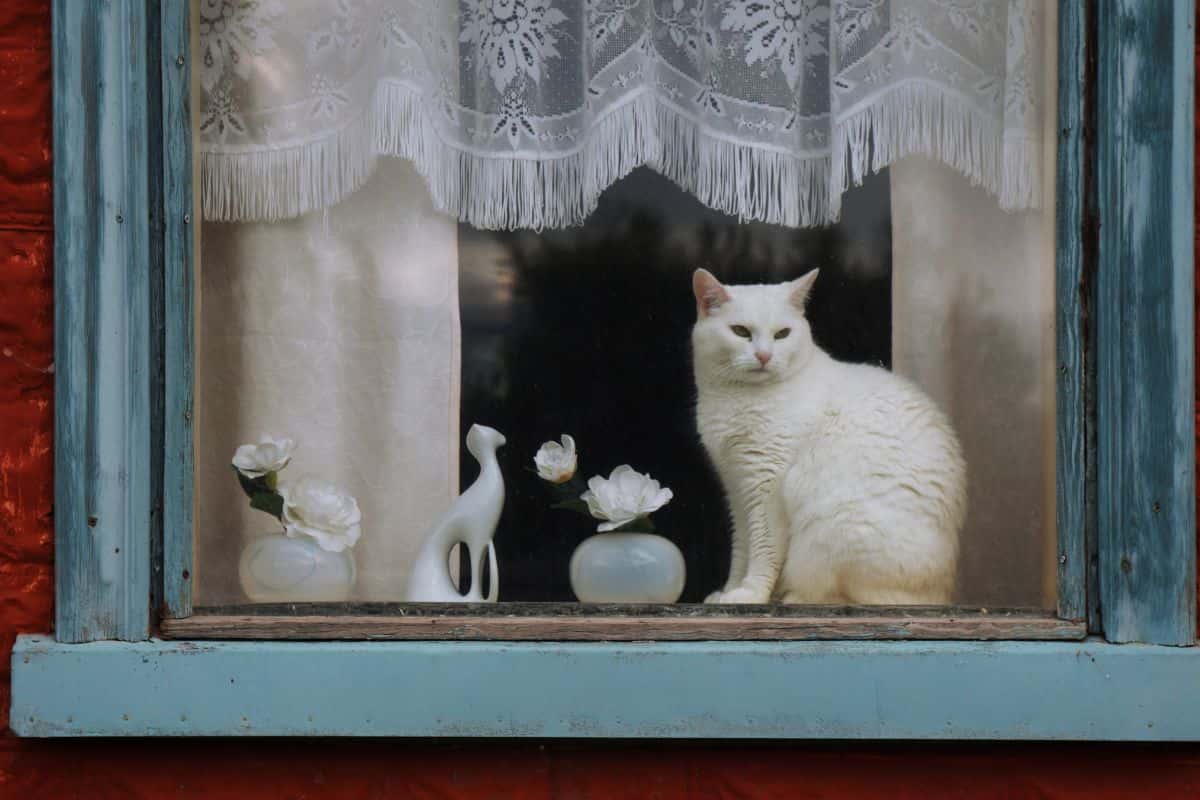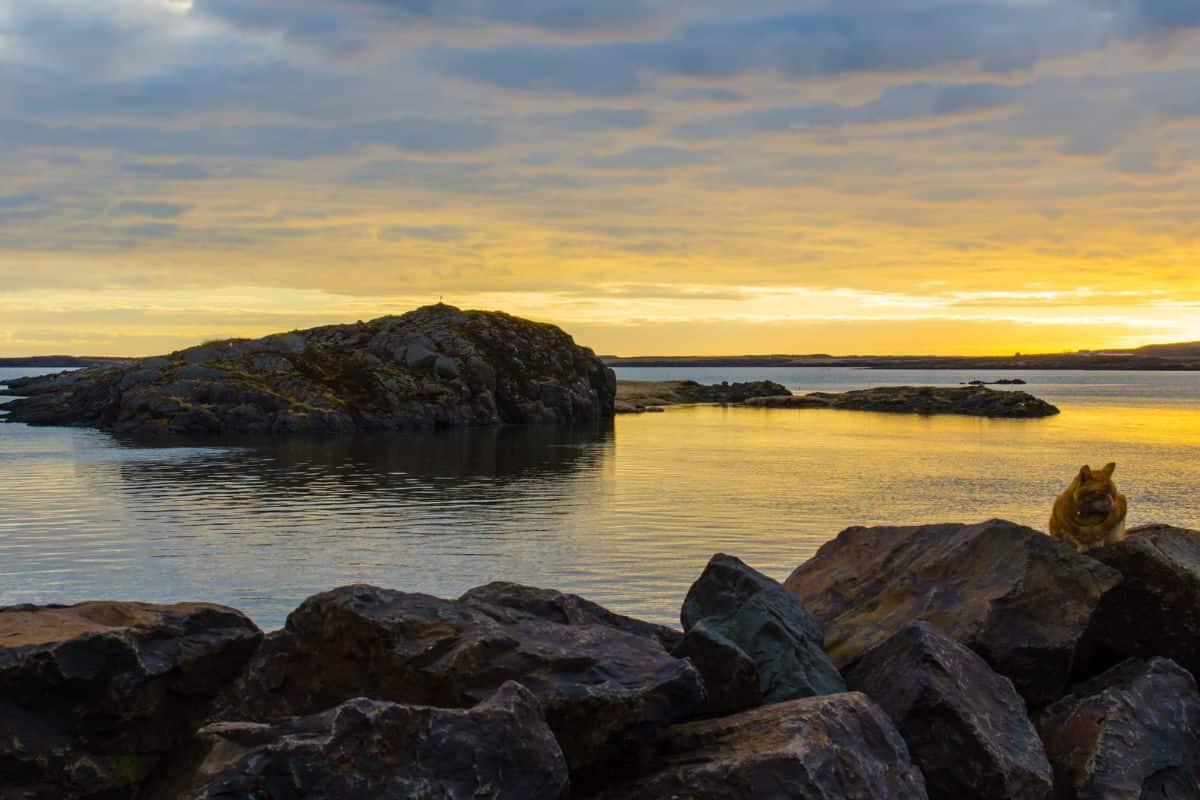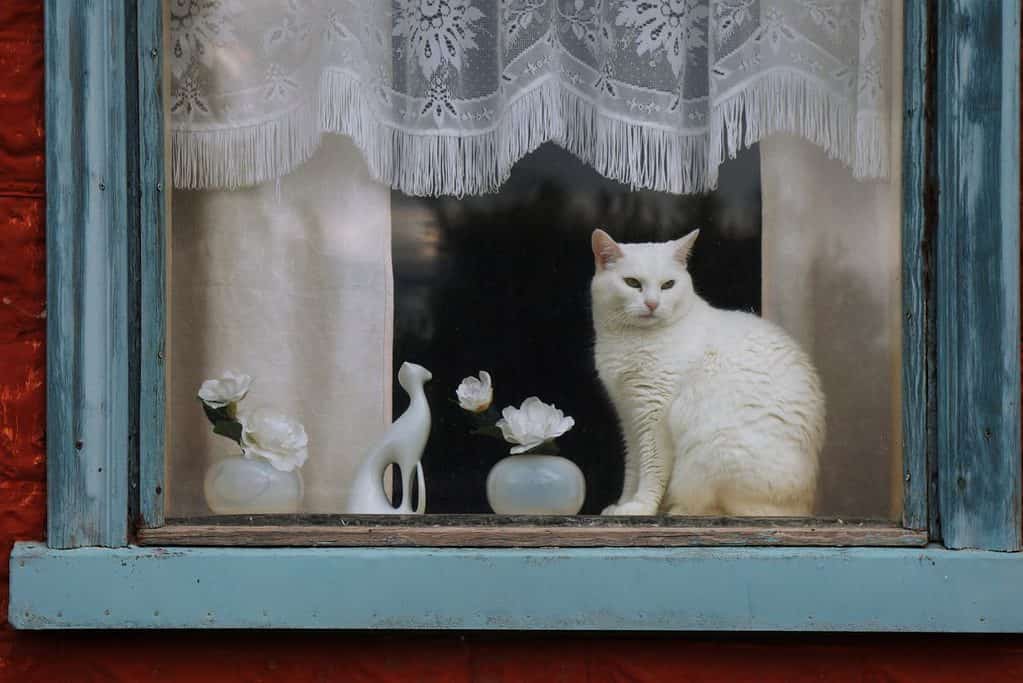The first domestic cats introduced into Iceland is believed to date back to Viking incursions to the island. The first cats were believed to have been brought over to Iceland from Ireland and perhaps also Scotland with the influx of human habitants sometime between 874 CE and 925 CE. [1]
How many cats are there in Iceland?
Iceland’s cat population is relatively small. While there are no accurate counts of the number of the cats, researchers estimate that about 20,000 felines exist in Iceland. This makes Iceland the European country with the lowest number of cats.
Of those cats, the estimates are that about 12,000 of them live in the capital, Reykjavík. That comes out to about one cat for every 10 residents.
What is the Icelandic word for cat?
The Icelandic word for cat is Köttur (or Kött or Ketti or Kattar depending on declension). The word for a female kitten is kisa and kisi for a male kitten.

Cats in Iceland’s capital
Researchers have noted that cats from Reykjavik have more genetic variation than cats out in the rural areas of Iceland.
Iceland’s capital is exposed to more international visitors and residents that contribute to a cat population that has different genetic backgrounds.
With dog ownership banned in Reykjavik until 1984, the city has always leaned towards an affinity for cats and carries the nickname, “the city of cats.”
Reykjavik has one cat adoption cafe named Kattakaffihúsið which opened in 2018. The cat adoption cafe features cats from the local shelter, Villikettir.
Cats in rural Iceland are more closely related to the original cats brought by the vikings
Researchers have found that the cats that live in rural Iceland are more genetically related to the original stock of cats brought by the vikings in the 9th and 10th centuries.

The University of Iceland’s unofficial mascot
For years, the unofficial mascot of the University of Iceland was a tortoiseshell cat named Rósalind. Rósalind was known for roaming around the university, greeting students and faculty.
Sadly, Rósalind passed away in January of 2022 and the university gave tribute to the small feline on their Facebook page.
Iceland’s Christmas Cat
Cats appear in various Icelandic lore and tradition.
One of the most famous and enduring Icelandic traditions is about Jólakötturinn, also known as the Yule Cat. According to this Icelandic folklore, Jólakötturinn is a large, ferocious cat that roams the countryside during the Christmas season, looking for people who have not received new clothes to wear for the holiday. When the Yule Cat finds these people, it is said to attack and devour them.
Iceland’s Christmas cat is frequently depicted as a symbol of the harshness of the Icelandic winter, and the legend is thought to have originated as a way to encourage people to work hard and finish their chores in time for Christmas so that they could receive new clothes and be safe from the Yule Cat.
References
[1] Todd, N. B., Fagen, R. M., & Fagen, K. (1975). Gene frequencies in Icelandic cats. Heredity, 35(2), 172-183. https://doi.org/10.1038/hdy.1975.82







